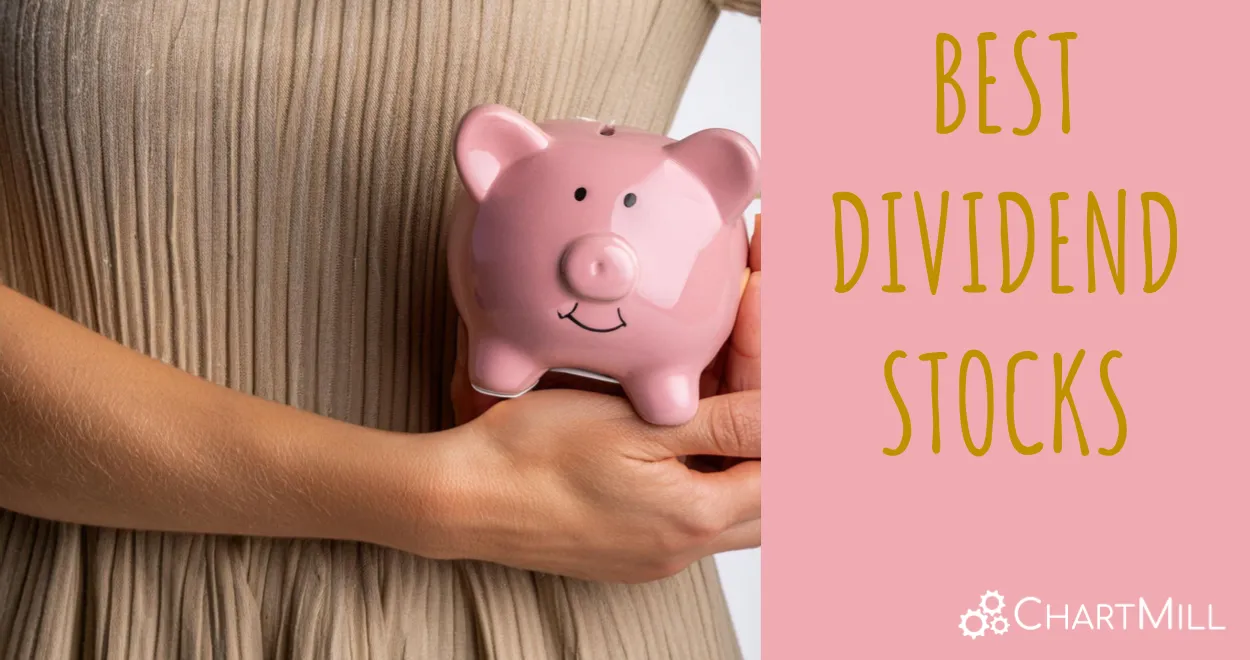Why NYSE:STLA is a Top Pick for Dividend Investors.
By Mill Chart
Last update: Mar 15, 2024
STELLANTIS NV (NYSE:STLA) is a hidden gem unveiled by our stock screening tool, featuring a promising dividend outlook alongside solid fundamentals. NYSE:STLA demonstrates decent financial health and profitability while ensuring a sustainable dividend. Let's break it down further.
Dividend Insights: NYSE:STLA
ChartMill provides a Dividend Rating for every stock, ranging from 0 to 10. This rating assesses various dividend aspects, including yield, growth, and sustainability. NYSE:STLA earns a 7 out of 10:
- With a Yearly Dividend Yield of 5.32%, STLA is a good candidate for dividend investing.
- STLA's Dividend Yield is rather good when compared to the industry average which is at 2.86. STLA pays more dividend than 97.44% of the companies in the same industry.
- STLA's Dividend Yield is rather good when compared to the S&P500 average which is at 2.40.
- The dividend of STLA is nicely growing with an annual growth rate of 386.64%!
- STLA has been paying a dividend for over 5 years, so it has already some track record.
- STLA pays out 22.63% of its income as dividend. This is a sustainable payout ratio.
How do we evaluate the Health for NYSE:STLA?
ChartMill employs its own Health Rating for stock assessment. This rating, ranging from 0 to 10, is calculated by examining various liquidity and solvency ratios. In the case of NYSE:STLA, the assigned 7 reflects its health status:
- Looking at the Altman-Z score, with a value of 2.34, STLA is in the better half of the industry, outperforming 79.49% of the companies in the same industry.
- The Debt to FCF ratio of STLA is 2.43, which is a good value as it means it would take STLA, 2.43 years of fcf income to pay off all of its debts.
- STLA has a Debt to FCF ratio of 2.43. This is amongst the best in the industry. STLA outperforms 97.44% of its industry peers.
- A Debt/Equity ratio of 0.24 indicates that STLA is not too dependend on debt financing.
- With a decent Debt to Equity ratio value of 0.24, STLA is doing good in the industry, outperforming 66.67% of the companies in the same industry.
- STLA does not score too well on the current and quick ratio evaluation. However, as it has excellent solvency and profitability, these ratios do not necessarly indicate liquidity issues and need to be evaluated against the specifics of the business.
Assessing Profitability for NYSE:STLA
ChartMill employs its own Profitability Rating system for stock evaluation. This score, ranging from 0 to 10, is derived from an analysis of diverse profitability metrics and margins. In the case of NYSE:STLA, the assigned 10 is noteworthy for profitability:
- STLA's Return On Assets of 9.20% is amongst the best of the industry. STLA outperforms 94.87% of its industry peers.
- The Return On Equity of STLA (22.76%) is better than 94.87% of its industry peers.
- The Return On Invested Capital of STLA (15.22%) is better than 97.44% of its industry peers.
- Measured over the past 3 years, the Average Return On Invested Capital for STLA is significantly above the industry average of 8.35%.
- The last Return On Invested Capital (15.22%) for STLA is above the 3 year average (14.80%), which is a sign of increasing profitability.
- The Profit Margin of STLA (9.81%) is better than 92.31% of its industry peers.
- STLA's Profit Margin has improved in the last couple of years.
- STLA has a Operating Margin of 12.19%. This is amongst the best in the industry. STLA outperforms 94.87% of its industry peers.
- STLA's Operating Margin has improved in the last couple of years.
- The Gross Margin of STLA (20.12%) is better than 82.05% of its industry peers.
- In the last couple of years the Gross Margin of STLA has grown nicely.
Every day, new Best Dividend stocks can be found on ChartMill in our Best Dividend screener.
Check the latest full fundamental report of STLA for a complete fundamental analysis.
Disclaimer
This is not investing advice! The article highlights some of the observations at the time of writing, but you should always make your own analysis and invest based on your own insights.
9.36
-0.01 (-0.11%)
Find more stocks in the Stock Screener
STLA Latest News and Analysis
 a day ago - ChartmillMarket Monitor April 15 Before Market Open ( Dell, Palantir UP, Meta DOWN)
a day ago - ChartmillMarket Monitor April 15 Before Market Open ( Dell, Palantir UP, Meta DOWN)Wall Street Starts Easter Week Strong as Tariff Concerns Ease
 6 days ago - ChartmillExploring STELLANTIS NV (NYSE:STLA)'s dividend characteristics.
6 days ago - ChartmillExploring STELLANTIS NV (NYSE:STLA)'s dividend characteristics.Is STELLANTIS NV (NYSE:STLA) a Good Fit for Dividend Investing?


